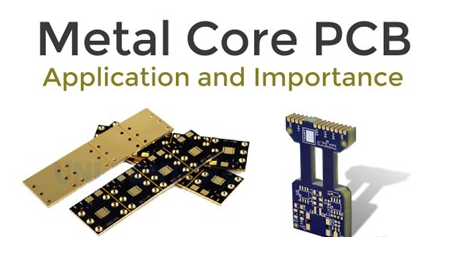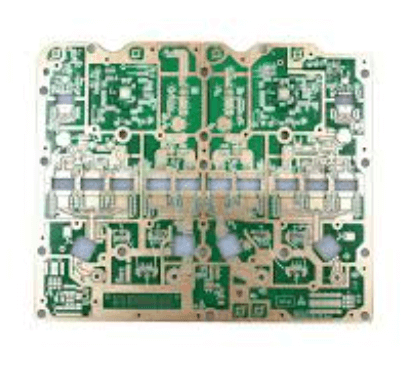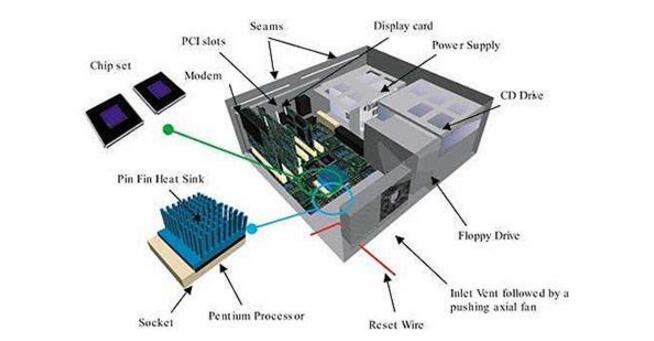Mcpcb metal core pcb
Advantages Of Using MCPCB In LED Applications
Metal Core Printed Circuit Boards (MCPCBs) have become increasingly popular in LED applications due to their unique advantages over traditional PCBs. One of the primary benefits of using MCPCBs in LED applications is their superior thermal management capabilities.
LEDs generate a significant amount of heat during operation, and if this heat is not effectively dissipated, it can lead to reduced performance, shorter lifespan, and even failure of the LEDs. MCPCBs address this issue by incorporating a metal core, typically made of aluminum or copper, which acts as a heat sink. This metal core efficiently conducts heat away from the LED components, ensuring that they operate within their optimal temperature range.
In addition to thermal management, MCPCBs offer enhanced mechanical stability.
The metal core provides a robust and durable foundation, which is particularly important in applications where the PCB may be subjected to mechanical stress or vibration. This increased stability helps to protect the delicate LED components and ensures reliable performance over time. Furthermore, the metal core’s rigidity reduces the risk of PCB warping or bending, which can be a concern with traditional PCBs, especially in larger or more complex designs.
Another advantage of using MCPCBs in LED applications is their ability to support higher power densities.
The efficient heat dissipation provided by the metal core allows for the use of higher power LEDs without the risk of overheating. This capability is particularly beneficial in high-intensity lighting applications, such as streetlights, automotive headlights, and industrial lighting, where powerful and reliable illumination is required. By enabling higher power densities, MCPCBs contribute to the development of more efficient and effective LED lighting solutions.
Moreover, MCPCBs can contribute to improved energy efficiency in LED applications.
The effective thermal management provided by the metal core reduces the need for additional cooling mechanisms, such as fans or heat sinks, which can consume additional power. By minimizing the energy required for cooling, MCPCBs help to maximize the overall energy efficiency of the LED system. This is particularly important in applications where energy consumption is a critical consideration, such as in battery-powered or off-grid lighting solutions.
In terms of design flexibility, MCPCBs offer several advantages as well.
The metal core can be machined and shaped to accommodate various design requirements, allowing for the creation of complex and customized PCB layouts. This flexibility is particularly useful in applications where space constraints or specific form factors must be considered. Additionally, the metal core can be used to create integrated heat sinks or other thermal management features, further enhancing the overall performance and reliability of the LED system.
Finally, the use of MCPCBs in LED applications can lead to cost savings over time.
While the initial cost of MCPCBs may be higher than that of traditional PCBs, the improved thermal management and mechanical stability they provide can result in longer-lasting and more reliable LED systems. This can reduce the need for frequent replacements or repairs, ultimately leading to lower maintenance costs and a better return on investment.
In conclusion, MCPCBs offer numerous advantages in LED applications, including superior thermal management, enhanced mechanical stability, support for higher power densities, improved energy efficiency, design flexibility, and potential cost savings. These benefits make MCPCBs an ideal choice for a wide range of LED lighting solutions, contributing to the development of more efficient, reliable, and effective illumination systems.

Thermal Management Solutions With Metal Core PCBs
Metal Core Printed Circuit Boards (MCPCBs) have emerged as a pivotal solution in the realm of thermal management for electronic devices. As electronic components become increasingly powerful and compact, the need for efficient heat dissipation has never been more critical. MCPCBs, characterized by their metal core, typically aluminum or copper, offer a robust solution to this challenge by providing superior thermal conductivity compared to traditional FR4 boards.
The primary advantage of MCPCBs lies in their ability to effectively manage and dissipate heat generated by high-power components.
This is achieved through the metal core, which acts as a heat spreader, distributing heat away from critical components and reducing the risk of thermal damage. Consequently, this enhances the reliability and longevity of electronic devices, making MCPCBs an indispensable component in high-performance applications such as LED lighting, power supplies, and automotive electronics.
In addition to their thermal management capabilities, MCPCBs also offer mechanical benefits. The metal core provides structural integrity, making the boards more durable and resistant to mechanical stress. This is particularly advantageous in applications where the PCB is subjected to harsh environmental conditions or mechanical vibrations. Furthermore, the metal core can serve as a grounding plane, improving the electrical performance of the circuit by reducing electromagnetic interference (EMI).
Transitioning from traditional PCBs to MCPCBs involves several considerations.
One of the key factors is the choice of metal for the core.
Aluminum is commonly used due to its excellent thermal conductivity, lightweight nature, and cost-effectiveness. Copper, while offering superior thermal and electrical conductivity, is heavier and more expensive, making it suitable for applications where performance is paramount. The selection of the metal core material is thus dictated by the specific requirements of the application, balancing performance, cost, and weight considerations.
Another critical aspect is the design and manufacturing process of MCPCBs.
The presence of a metal core necessitates specialized fabrication techniques to ensure proper insulation between the conductive layers and the metal core. This is typically achieved through the use of thermally conductive but electrically insulating dielectric materials. The thickness of the metal core and the dielectric layer must be carefully optimized to achieve the desired thermal and electrical performance.
Moreover, the integration of MCPCBs into electronic systems requires careful thermal management planning.
This includes the use of thermal interface materials (TIMs) to enhance heat transfer between the MCPCB and heat sinks or other cooling mechanisms. Proper thermal design ensures that the heat generated by the components is efficiently transferred to the metal core and subsequently dissipated, maintaining the components within their safe operating temperature range.
In conclusion, MCPCBs represent a significant advancement in thermal management solutions for modern electronic devices. Their ability to efficiently dissipate heat, coupled with their mechanical robustness and potential for improved electrical performance, makes them an ideal choice for high-power and high-reliability applications. As electronic devices continue to evolve, the role of MCPCBs in ensuring their performance and longevity will undoubtedly become increasingly important. The transition to MCPCBs, while requiring careful consideration of material selection and design, offers substantial benefits that can significantly enhance the overall performance and reliability of electronic systems.

Design Considerations For Metal Core Printed Circuit Boards
When designing Metal Core Printed Circuit Boards (MCPCBs), several critical considerations must be taken into account to ensure optimal performance and reliability. MCPCBs are widely used in applications requiring efficient heat dissipation, such as LED lighting, power supplies, and automotive electronics. The unique structure of MCPCBs, which typically includes a metal core layer sandwiched between dielectric and copper layers, necessitates a thorough understanding of thermal management, material selection, and manufacturing processes.
One of the foremost design considerations for MCPCBs is thermal management.
The primary advantage of using a metal core, often aluminum or copper, is its superior thermal conductivity compared to traditional FR4 substrates. This characteristic allows for effective heat dissipation away from heat-generating components, thereby enhancing the longevity and performance of the electronic device. Designers must carefully calculate the thermal resistance and ensure that the heat path from the components to the metal core is optimized. This involves selecting appropriate dielectric materials with low thermal resistance and strategically placing thermal vias to facilitate heat transfer.
In addition to thermal management, material selection plays a pivotal role in the design of MCPCBs.
The choice of metal core material, dielectric layer, and copper thickness must align with the specific requirements of the application. Aluminum is commonly used due to its balance of cost, weight, and thermal conductivity, while copper offers superior thermal performance but at a higher cost and weight. The dielectric layer, which electrically isolates the metal core from the copper circuitry, must possess high thermal conductivity and electrical insulation properties. Furthermore, the thickness of the copper layer must be chosen based on the current-carrying capacity and the need for robust mechanical support.
Another critical aspect of MCPCB design is the layout and routing of the circuitry.
Given the thermal constraints, designers must ensure that high-power components are placed in proximity to the metal core to maximize heat dissipation. Additionally, the routing of traces should minimize thermal resistance and avoid creating hotspots. The use of wide traces and thermal relief pads can aid in distributing heat more evenly across the board. Moreover, designers must consider the potential for thermal expansion and contraction, which can lead to mechanical stress and potential failure of solder joints or components. Therefore, incorporating thermal expansion coefficients into the design calculations is essential.
Manufacturing processes also significantly impact the performance and reliability of MCPCBs.
The fabrication of MCPCBs involves specialized techniques such as drilling through the metal core, which requires precision to avoid damaging the dielectric layer. The lamination process must ensure a strong bond between the metal core, dielectric, and copper layers to maintain structural integrity and thermal performance. Additionally, surface finish options, such as HASL, ENIG, or OSP, must be selected based on the application’s environmental and operational conditions to ensure long-term reliability.
In conclusion, the design of Metal Core Printed Circuit Boards necessitates a comprehensive approach that addresses thermal management, material selection, circuit layout, and manufacturing processes. By meticulously considering these factors, designers can leverage the advantages of MCPCBs to create high-performance, reliable electronic devices capable of operating in demanding thermal environments. The integration of these considerations into the design process not only enhances the functionality of the final product but also ensures its durability and efficiency in real-world applications.
Comparing MCPCB To Traditional FR4 PCBs
Metal Core Printed Circuit Boards (MCPCBs) and traditional FR4 PCBs are two distinct types of circuit boards used in various electronic applications. Understanding the differences between these two can help in selecting the appropriate type for specific needs. MCPCBs, as the name suggests, incorporate a metal core, typically aluminum or copper, which serves as a heat sink to dissipate heat away from critical components. In contrast, traditional FR4 PCBs are made from a woven glass epoxy material, which is less effective at heat dissipation.
One of the primary advantages of MCPCBs over FR4 PCBs is their superior thermal management.
The metal core in MCPCBs provides a direct path for heat to be conducted away from heat-generating components, such as LEDs or power transistors. This is particularly beneficial in high-power applications where excessive heat can lead to component failure or reduced performance. By efficiently managing heat, MCPCBs can enhance the reliability and longevity of electronic devices. On the other hand, FR4 PCBs rely on thermal vias and heat sinks to manage heat, which can be less efficient and more complex to design.
In addition to thermal management, MCPCBs also offer mechanical robustness.
The metal core provides additional structural support, making these boards more resistant to mechanical stress and vibration. This makes MCPCBs suitable for applications in harsh environments, such as automotive or industrial settings, where durability is crucial. Conversely, FR4 PCBs, while generally adequate for many applications, may not offer the same level of mechanical strength and can be more susceptible to damage under extreme conditions.
However, it is important to consider the cost implications when comparing MCPCBs to traditional FR4 PCBs.
MCPCBs tend to be more expensive due to the materials used and the additional manufacturing processes required.The metal core itself adds to the cost, and specialized techniques are needed to ensure proper insulation and electrical performance. Therefore, while MCPCBs offer significant benefits in terms of thermal management and mechanical strength, they may not be the most cost-effective solution for all applications. FR4 PCBs, being more economical, are often preferred for low-power or less demanding applications where thermal and mechanical considerations are not as critical.
Another aspect to consider is the design flexibility.
FR4 PCBs offer greater versatility in terms of layer count and complexity. They can be easily manufactured in multi-layer configurations, allowing for more intricate circuit designs. MCPCBs, on the other hand, are typically limited to single-layer or double-layer designs due to the presence of the metal core. This limitation can restrict their use in applications requiring complex circuitry or high-density interconnections.
In conclusion, the choice between MCPCBs and traditional FR4 PCBs depends on the specific requirements of the application. MCPCBs excel in thermal management and mechanical robustness, making them ideal for high-power and harsh environment applications. However, they come at a higher cost and with some design limitations. FR4 PCBs, while less effective at heat dissipation and mechanical strength, offer greater design flexibility and are more cost-effective for less demanding applications. By carefully evaluating the needs of the project, one can make an informed decision on the most suitable type of PCB to use.





